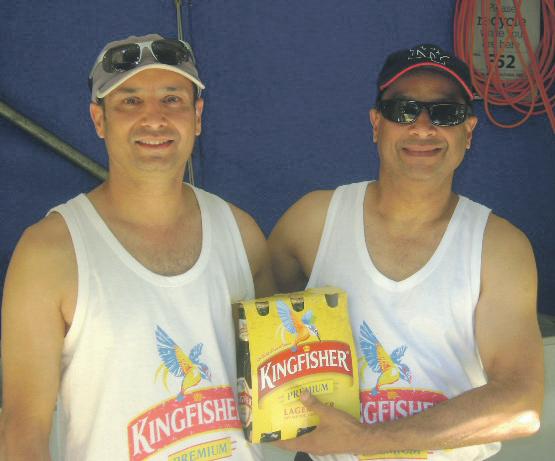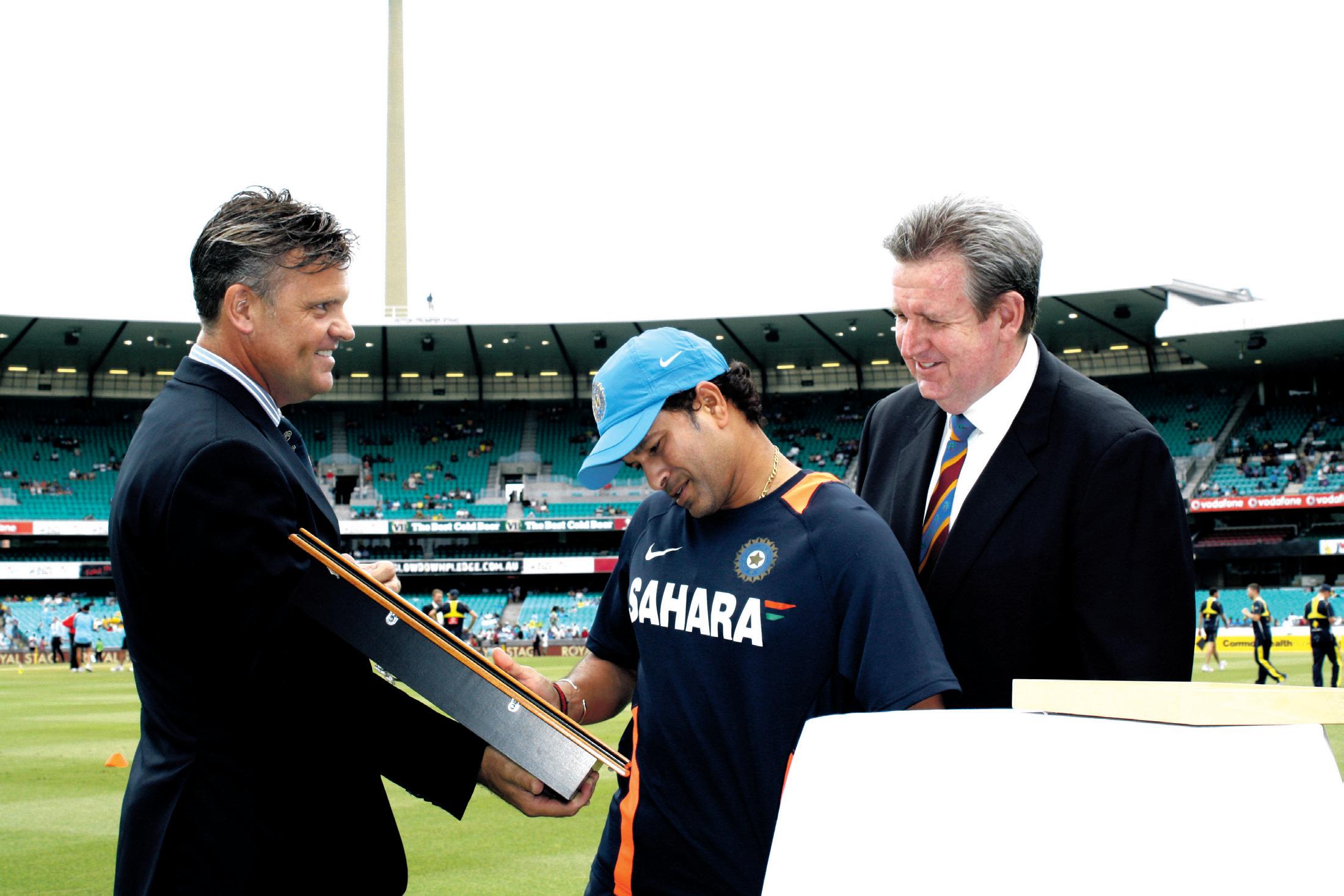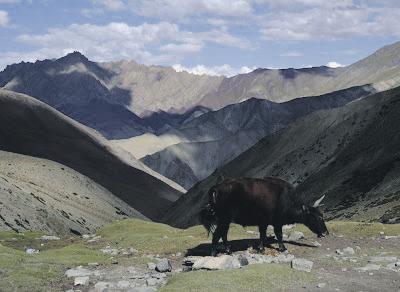
14 minute read
Strong Indian presence at NMF in Canberra
from 2012-03 Sydney (1)
by Indian Link
The 2012 National Multicultural Festival (NMF) in Canberra was a whole weekend event, which commenced on Friday, February 10 at 4.30pm, with the last of the performances ending at 5pm on Sunday, February 12. This festival celebrates cultural diversity in Australia and is held annually in Canberra. Prior to the festival, the ACT Minister for Multicultural Affairs, Ms Joy Burch MLA said, “Australia’s premier celebration of all things multicultural will again take centrestage in the national capital, giving us all the chance to indulge in music, dancing, cultural heritage and of course fantastic food.”
The NMF brings Canberra to life with exhibitions, craft, and local groups performing a range of dance, music and theatre. The festival’s objective is to celebrate the rich multicultural diversity of the Australian Capital Territory. This is achieved through participation of multicultural community groups showcasing their respective cultural traditions and heritage.
The festival has continued to grow as 240,000 people attended the event last year, and this year it attracted a much larger crowd of 260,000. The three-day extravaganza provided excellent socialising opportunity for people of all ages. This was evident throughout the day and evening, as attendees enjoyed a weekend of ethnic food, dancing, enjoying, and learning a bit more about the many different cultures that exist in Canberra and the rest of Australia.
The success of the festival was due to the immense community involvement from across Canberra’s multicultural spectrum, with many thousands of people dedicating their time and energy to prepare for the event. The ACT Indian community is once again proud to have actively played a role at the festival and in the community. Half of Akuna Street in Canberra mostly had South East Asian food stalls and a beer bar serving the famous Indian Kingfisher beer. On a warm, sunny Saturday afternoon, this corner was my favourite spot at the festival.
Half of Akuna Street was allocated to the “India in the City” programme, which Deepak Raj-Gupta, President of Australia India Business Council (AIBC), has been successfully organising since the last four years. His tireless effort was recognised by the ACT Government last year when Deepak received an award from the Minister for Multicultural Affairs at the ACT Multicultural Ball.
On the opening night, Bombay Royale presented excellent Bollywood entertainment, with funky, bizarre and mysterious music from vintage Indian cinema productions. The programme continued to be sensational on the weekend as well, as the entertainment at the Akuna Street stage from late afternoon to 11pm, ranged from an Indian fashion parade, classical dance items, items from the Mandir Society of Australia and the Bengali Association. Some of the most entertaining items were: garba, bhangra and two Bollywood performances by Shiamak Davar. A member of the Sikh community entertained the audience with his tabla skills and the young ladies from the Lotus Dance School were outstanding with their dance performances, which were perfectly choreographed by Purvi Desai.
“India in the City” not only attracted westerners, but also brought together Indians from all over Canberra for a relaxing day at the free open-air entertainment venue, surrounded by food stalls of many ethnic varieties. The organisers, artists and leaders of various Indian associations can be proud of yet another successful “India in the City” programme during the National Multicultural Festival in Canberra.



Panic as 4.9 tremor shakes Delhi, adjoining areas
A 4.9-magnitude tremor shook the Indian capital and its adjoining areas recently, startling people in offices and homes as the ground shook and windowpanes rattled. The quake, centred near Bahadurgarh town close to the Haryana-Delhi border, did not lead to any casualties.
The epicentre was just 35 km from New Delhi, the India Meteorological Department (IMD) said.
“The Delhi and National Capital Region (NCR) felt slight intensity tremors, which measured 4.9 on the Richter Scale. The epicentre was in the Haryana and Delhi region,” R.S Dattatryam, director, Seismology Division, India Meteorological Department (IMD) said, when contacted. According to the IMD, the tremor was felt at 1.11 p.m.
As the ground swayed, many residents and office-goers in Delhi, Gurgaon and Noida ran out of their buildings into the open.
Sources in Rohtak said the boundary wall of a school in Mayna village of Rohtak district collapsed. The district authorities, however, could not confirm the incident.
Some people working and living in highrise buildings in Gurgaon, which has the offices of several MNCs and leading Indian companies located there, were asked to vacate the buildings as the tremors were felt for over 10 seconds.
“Sitting in an office on the 12th floor in Nehru Place, I felt it very strongly like somebody shaking my chair. There was a general air of panic. Luckily there was no repeat tremor,” Mahi Singh, a MNC employer said.
“I was in bed recovering from surgery when I was shaken awake by the quake. I tried to rush outside, limping,” Ramkant Mahant from east Delhi said.
“All the small objects on tables started shaking, I felt it for over five seconds, followed by a rumbling noise,” said Rumu Banerjee of Chittaranjan Park in south Delhi.
Throughout the city, people called up relatives and friends, and asked after their well-being.
The IMD official asked the public not to panic as it was a slight intensity tremor.
“It is a slight intensity tremor, which was felt in the Delhi and NCR areas. No infrastructural damage is expected from the tremor of such low magnitude. At most, there may be some plaster falling off in weak buildings,” Dattatryam said.
“The possibility of aftershocks are very minimal for such a low intensity quake,” he added.
However, the quake did not seem to have affected the concentration of students appearing for their board exams. Many, however, complained they were not given extra time to finish their papers disrupted by the 10-second tremor.
“We did not have the time to react as the main concern was finishing the Physics paper which was lengthy. We were left wondering what was the noise, and realised it was a quake,” said Mrinalini Mahajan who was writing her Physics paper in St Mary’s School in Dwarka area.
Smridhi Gupta was upset over not being allowed extra-time to revise her answers.

“We all were taken aback with the tremor. The windowpanes of the classroom were rattling. Though the tremor lasted only for ten seconds, it took us almost ten minutes to get back to writing. I wish we were given extra time,” Gupta said.
Another student who appeared for her board exam in Shri Ram School in Gurgaon said: “There was a bit of panic but we were done with the paper.”
Tremors were also felt in Indonesia and Argentina.
“They were two separate quakes that shook Indonesia and Argentina at 12.25 p.m. and 1.16 p.m., respectively. They are not linked,” stated Dattatryam.
“The epicentre in Indonesia was
Northern Sumatra, while it was Santiago Del Estero in Argentina,” he added. The intensity of Northern Sumatra quake and Argentina quake was 5.1 and 6 on the Richter scale, respectively.
SpiceJet foresees tough times
Budget carrier SpiceJet’s chief executive Neil Mills feels the aviation sector, marred by high fuel and interest cost in the coming fiscal, will continue to face “tough operating conditions”.
“I think the tough conditions will continue for a while in the coming fiscal. Our futures are pegged with oil prices and they are very high right now,” Mills said in an interview.
“There are some decisions on new policy like direct import of fuel and foreign direct investment. We are evaluating them and will do what is best for us.”
According to Mills, the low cost carrier (LCC) was in touch with fuel suppliers for logistical support to allow airlines to directly import jet fuel.
“We are evaluating the impact of the decision whenever it comes. We are in touch with them (fuel suppliers), but I cannot comment on how much savings would emerge out of this. But it will be substantial.”
Mills’ views come as the government had on Feb 22 notified direct import of jet fuel and called upon interested carriers to apply for licences.
This came after the Feb 7 decision by a group of ministers (GoM) headed by Finance Minister Pranab Mukherjee to roll out a plan to help domestic carriers, allowing them to directly import aviation fuel.
The move will enable airlines to cut operating costs by about 10-15 percent, saving on sales tax, which ranges between three percent and 35 percent and is levied by state governments.
Jet fuel now constitutes about 50 percent of the total operating cost of airlines in India. Domestic airlines are estimated to have lost around Rs.3,000 crore in the first six months of this fiscal.
On the issue of foreign capital by foreign airlines in domestic passenger carriers, Mills said the airline was not looking for a foreign partner but was evaluating the proposal.
Mills’ confidence is evident as the airline’s promoter Kalanidhi Maran decided March 2 to infuse Rs.100 crore into the carrier in lieu of five percent equity or additional 42.9 million shares.
Sant Mat is a practical spiritual path based on meditation on the inner Light and Sound, ethical values, service to others and love for all creation. Its goal is to enable the soul to return and merge into its source; the purpose of human life described by mystics of all traditions. Focus and sincerity are essential, as is the help of the living spiritual Master. Know Thyself as Soul Foundation is a non-profit incorporated association. It offers its services free of charge.

Must have appropriate qualificatioms, experience and a current police clearance.

“This decision shows the confidence of the promoters in the company and its viability. The board has taken this decision and will allot 42.9 million preferential shares to the promoters,” Mills said.
“This is the second time in eight months when the promoters have infused equity. Last September, we received Rs.130 crore and five percent of the equity shares were allotted to the promoters.”
Fresh funds should come as a relief to the airline, as the whole sector is facing tough operating conditions like high interest and fuel costs.
“This (fund) will go into the normal working capital and for general growth. Our debts are affordable, we are paying the oil companies, salaries and we are not behind any schedule. We will get through these tough times,” Mills said.
The budget carrier had Feb 6 reported a net loss of Rs.39.26 crore for the quarter ended Dec 31 from a net profit of Rs.94.44 crore in the like period of 2010-11.
The company’s auditors in a review report said that accumulated losses have eroded the net worth of the company.
“As of Dec, 31, 2011, the company’s accumulated losses of Rs.107,781.3 lakh has substantially eroded the net worth of the company, indicating the existence of a material uncertainty that may cast doubts about the company’s ability to continue as a going concern,” the auditors said.
Now, cabbies, maids can learn while they earn
A couple of years down the line, Mumbai residents may be dealing with cabbies and auto-drivers who are full-fledged graduates. Thanks to an open university, deprived sections of the city’s huge workforce will get a chance to enhance their skills.
The Nashik-based Yeshwantrao Chavan Maharashtra Open University (YCMOU) has designed special short-term and longterm courses for working classes like cab and auto drivers, private drivers and even maids to enable them to compete better in the job and money markets.
The special preparatory and degree courses shall be inaugurated Tuesday in Mumbai’s All India Institute of Local Self Government at Andheri by eminent Bollywood actor Kader Khan, according to a YCMOU official.
“Given our social objectives, the courses shall be extremely simple but equip the ‘students’ to handle them without disturbing their crucial work schedules as most are the sole bread-winners of their families,” said Shrinivas Belsare, YCMOU head of corporate communications.
There are an estimated 400,000 cabbies in the city. According to Belsare, around 200,000 cabbies from Mumbai, besides a potential 1.5 million elsewhere in Maharashtra, are expected to benefit from the new course, enrolment for which starts in June 2012.
YCMOU’s format for the experimental course would be unique, using CDs, FM radio programmes and a few books to enable the cabbies to learn while on the go - driving.
It is expected to similarly help housemaids, who number around 800,000 in the city.
Besides, the courses would not burn a hole in the pockets of the ‘students’, considering they are at the bottom rung of the people contributing to the national economy, Belsare said.

“The preparatory course will cost Rs.600, with a 50 percent discount for the target category of cabbies and it is equivalent of HSC. This will be followed by a diploma course, advanced diploma and a degree, each costing Rs.1,500, and recognized everywhere,” Belsare explained.
“Accordingly, if a person completes one year, that is, two modules, he gets a diploma, after two years an advanced diploma and a full-fledged, recognised degree after completing the full three-year course. It means a win-win situation for all, even those who drop out after a year or two,” he added.
The new courses are expected to be a boon for the next generation of cabbies as the state government plans to soon make HSC-level education compulsory before issuing new permits for autos and taxis.
Kader Khan, who himself played a cabby in several movies like Aa Ab Laut Chalen and Naseeb, was impressed with YCMOU’s new course and readily agreed to inaugurate it, Belsare said.
A graduate, the 65-year-old Khan, after taking a break from his acting-writing career, is now engrossed in designing a new syllabus from nursery to post-graduation in Islamic studies for the benefit of students in thousands of ‘madrassas’ in India.
Given the large, semi-literate migrant population in Mumbai, YCMOU will offer its new course in Hindi, Marathi and English for the cabbies, with the approval of the powerful Bombay Taximen’s Union. Its existing BA degree course in Urdu have got over 2,000 students on the rolls and proved beneficial to migrants, mostly school dropouts, coming here in search of employment opportunities.
YCMOU has around 400,000 students on its rolls in the state, including 50 percent women, who would otherwise have had no opportunity to educate themselves, he said.
The course modules are comprehensive and wide-ranging including soft skills, road safety, tourism, health, first aid, civic discipline, transport rules, insurance, traffic scenario, networking with courier companies and basic banking.
“This will enable them to get a proper perspective of life and help them consider other lucrative professional options rather than spending their lives driving cabs,” Belsare pointed out.
The YCMOU course is billed as the first of its kind among the 14 open universities around the country which have been silently spurring literacy levels among the most unfortunate sections of Indian society.
Playing with a splash of safety this Holi
Amid the riot of powdered hues and watery splashes that Holi brings, experts say people should not ignore safety issues as toxic chemical colours could bring on severe skin infections, eye injuries and other problems.
The festival of colours was celebrated on March 8 this year.
“The use of synthetic colours during Holi can cause severe irritation, dermatitis, burning, redness and also in some cases blister formation. It can also lead to irreversible pigmentation,” said Amit Bangia, consultant dermatologist at the Asian Institute of Medical Sciences.
“Besides, many water colours have an upcoming film about Osama bin Laden in Chandigarh, India, March 2, 2012. Right-winged Hindu nationalist group Vishwa Hindu Parishad have protested against the hoisting of Pakistani flags during the filming. Bigelow and cast are in India shooting at various locations over the next few weeks, local media reports. alkaline base capable of causing temporary blindness and severe injuries. Colours in the form of pastes sometimes have toxic compounds mixed in a base of engine oil or other inferior quality oil,” Bangia added. Chemical colours have been in vogue for a long time, and the cost-effectiveness and easy availability make them more preferred than natural colours, say experts. But often people are not aware of their harmful effects.
But one can prepare organic colours at home.
“Turmeric can be used for yellow colour. Henna can act as a green colour and dried rose petals can be substituted for red,” Bangia said.
The dangers lie not just in colours. Throwing water-filled balloons can also cause injury if targeted at the eyes or ears.
“The balloons used by children during Holi are most dangerous and can cause blunt eye injury. An injury can lead to the loss of vision or loss of the eye. These are all eye emergencies and should be taken care of as early as possible,” said Nikhil Seth, consultant opthalmologist at the Asian Institute of Medical Sciences.
“Eyes are extremely susceptible during Holi because of their strategic place in the body and also because the use of harmful chemicals is known to cause eye irritation,” added Seth.
While the best precaution remained use of natural colours, people were also advised to reduce their hours of playing Holi or take breaks when playing it at a stretch.
“If it is played for six to seven hours at a stretch, he/she is vulnerable to acquiring irritants such as burns, blisters or contract allergy, mild discolouration (which is reversible) and acne. It’s best advised to take a break in between,” Bangia said.
Another set of precautions was to use a protective barrier between skin and colour. A layer of sun screen could help prevent direct contact of chemicals with the skin. After playing with colours, use of lukewarm water to clean your body was recommended.
“People must realise that the colours have been added to Holi to make the festival more joyous and enjoyable and not to cause inconvenience to others. So, the next time you play with colours, use good quality or natural colours and play according to the convenience of others,” suggested Seth.
North Delhi resident Moti Lal Ganju, 45, said he has always played the festival with natural colours. But with synthetic colours flooding the markets, it is best to make the colours at home.
“These days, Holi colours are sold loosely on the roadside by small traders who often do not know the source. Sometimes, the colours come in boxes that specifically say ‘For industrial use only’,” Lal said.
“We should make sure our family celebrates the festival with organic colours. Let us not allow hard colours to spoil the charm of gujiyas and music,” Lal quipped.
The majestic Himalayas have always attracted me with its range of snow-clad peaks, deep gorges, green valleys, and the fast and furious rivers carving out their course over varied terrain since thousands of years. I have travelled to both, the Indian and Nepal side of the Himalayas by motorbike and car in the past, so I yielded easily to my brother’s invitation to join him and Vandana on a trek to the Markha Valley. Anita worked out all my logistics, and Apoorva volunteered to take care of herself, Casper and our home.
Soon I was watching the Kullu valley zooming up quickly as we began our descent in the turbo prop plane.
We went on an acclimatization trek to the Solang Valley, to get our legs and lungs into shape for the change in altitude. The climb was steep and we had a few hairraising moments crossing a raging stream over a log of wood which served as a foot-bridge.
We crossed Rohtang by road and faced a big setback at the base was dry with sparse vegetation in the valleys and highly prone to landslides and rockfalls. The days were hot and the nights, windy and cold. We followed the trail and camped at Rumbak, the base camp of GandaLa, Shingo base camp, Skyu, Sara, Markha, Thochuntse, Nimaling and Chukmaro. On an average we trekked for about 4-5 hours each day, and some days were unbearably hot as the canyons turned in to heat radiators at noon. We climbed two mountain passes at GandaLa (5100 mts) and GongmaruLa (5300 mts). Fortunately, acclimatization happened without any dramas.


“See that shirt hanging from the branch over there?” asked our knowledgeable guide, Gyan pointing. “It was from the photographer who was shooting here when the floods swept him away last year.” We quickly moved to higher grounds!
I felt claustrophobic in the sleeping bag and on some nights, I crept out of the tent to gaze at the sky with a million stars till the cold winds forced me back to the relative comfort of the tent. I came across mountain goats walking fearlessly and nimbly over steep ledges where even the thought of being that high made me feel faint. I came face-to-face with a chameleon who let me









